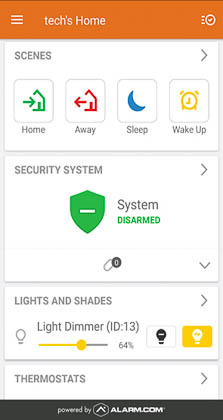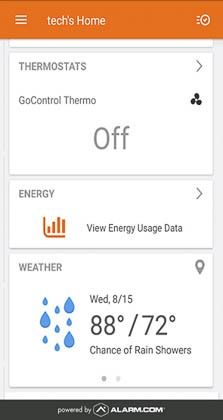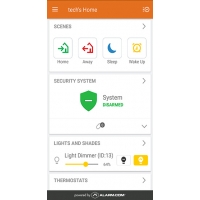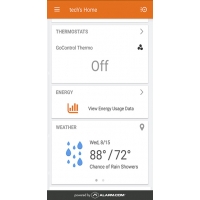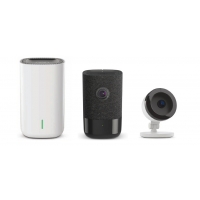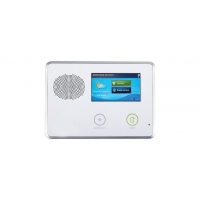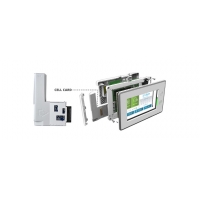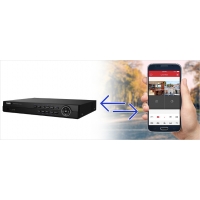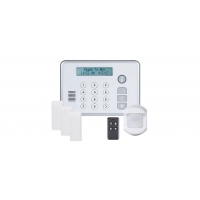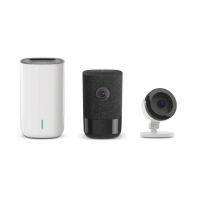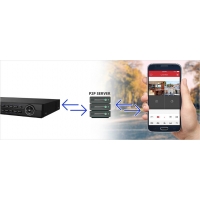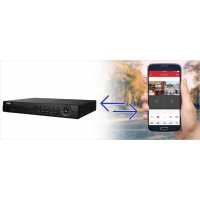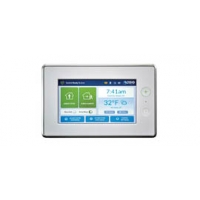The Advantages of Using 2GIG & Qolsys Products With Alarm.com
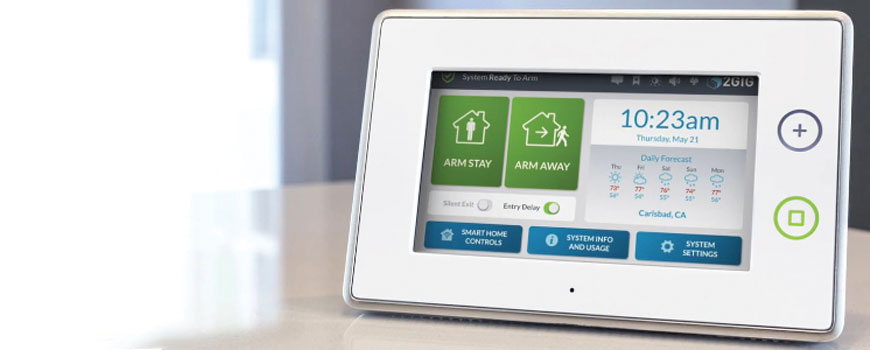
Why Aren't You Selling the Alarm.com Service and 2GIG Products?
So you install security cameras? Great! But are you installing home automation and alarm equipment using 2GIG or Qolsys controllers and an Alarm.com service? If you are, you are genius!
If you aren’t, why not?? This is a great selling tool to allow you to expand your service offerings! Not to mention, it allows you the opportunity to make monthly income from your clients.
Now if you saw the word “Alarm” in Alarm.com and immediately got turned off because either you are not interested in installing alarm equipment or you do not have an alarm installer's license, DO NOT STOP READING! There are still opportunities for you and that’s why I am writing today.
Alarm.com is way more than just an alarm cloud service. As a matter of fact, out of all the things it can do, providing service to alarms is just one small piece.
What is Alarm.com and how Does It Work With 2GIG Products?
First, let's explain what Alarm.com is so that you can get a better grasp of how it works. Alarm.com is basically the cloud service that lets you remotely manage your alarm and home automation system.
Let's compare it to a surveillance system since you already know how that works. To get a surveillance DVR remotely viewable, you can do one of 2 things:
1. Port Forwarding:
This is essentially configuring your router in a manner that allows you to view your DVR from your cell phone or a PC at a remote location. It makes a direct connection from the remote viewer to the DVR.

2. A P2P Server
This is a much “easier-to-setup” method for the user to get their DVR remotely viewable. They scan a code on their DVR with their cell phone and they are done! This works because of a middle man proxy server known as a P2P (peer to peer) server.

Most Surveillance manufacturers have their own P2P server that you must use for their device. Normally it’s a free service unless you want to save some video to the server which usually means a paid monthly account.
So, How Does the Alarm.com Service Work?
The easiest way to explain it would be that Alarm.com is like a P2P server on a video surveillance system. It acts as middle man allowing you to view your Alarm / Home Automation controller remotely. However, Alarm.com doesn't sell alarm panels / home automation controllers; they simply act as the service for 3rd party manufacturers who do make the controllers, such as 2GIG.
Let's take the 2GIG controllers for example. 2GIG the company does not have a P2P service, nor is there any way to view the 2GIG controllers remotely from your cell phone or a computer without using the Alarm.com service. 2GIG uses a cellular card to communicate with the Alarm.com service, so you do not need a dedicated internet connection at the install site. Look at the illustration below to see how it works.
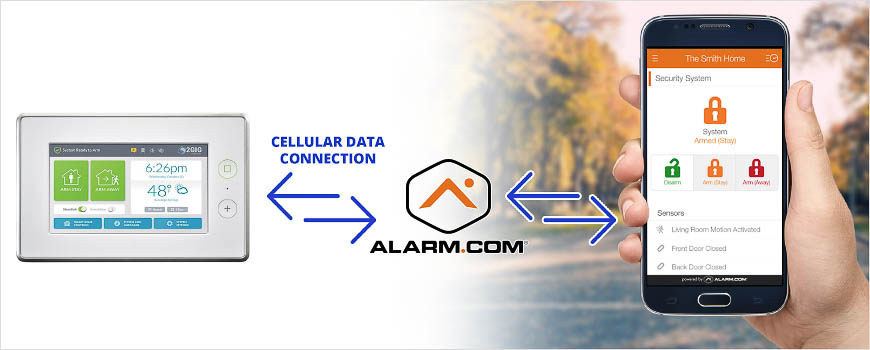
We understand this whole process is kind of confusing, and you probably still have some questions about it. Here is a list of just about every frequently asked question we get concerning Alarm.com. Hopefully this will help you better understand this incredible service.
That's because there's a cell service involved. With a surveillance system, your DVR uses your home or business internet connection to connect to the P2P server. However, a 2GIG controller uses a 3G/4G cellular data connection to connect to the Alarm.com service.
For this to work properly, you will implant a cellular card inside the GC3 controller. These cards come in 2 common varieties: AT&T and Verizon.
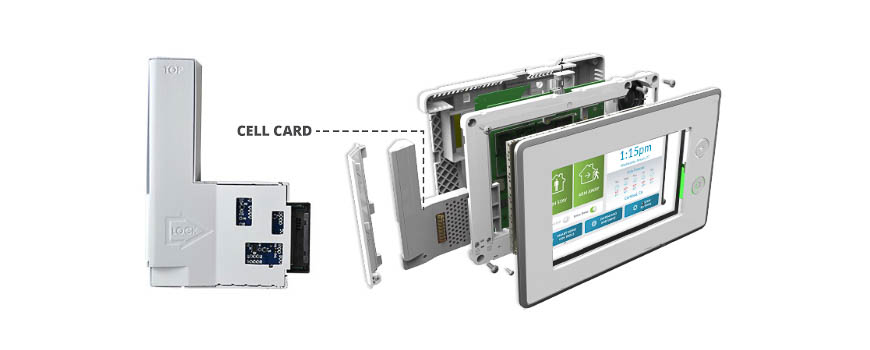
You can go to Alarm.com’s website and view which carrier has a better signal quality for your area. In most all cases, it is Verizon.
We here at Nelly’s sell the cell cards that go inside the GC2 and GC3 controllers. As for the Rely Panel, the cell card is already built in.
Here's the best part. You do not pay Verizon or AT&T at all. You only have to pay Alarm.com! This is why the Alarm.com service costs money. Is everything making sense now?
This will not cost as much as a monthly cell phone bill! Alarm.com has some mega deals worked out with Verizon and AT&T. The Alarm.com service is very very cheap, nothing like your normal cell phone bill. They have various levels of service offerings to choose from but even the most expensive one is very cheap.
In addition to the initial install, you can also make monthly service income. An end user cannot setup an account with Alarm.com. Only professional installers can setup accounts with alarm.com.
You do not have to be a licensed alarm installer to set up an account with Alarm.com. However, they do require you to have a professional business installing equipment such as home automation, A/V, or security related items, in the hopes that you plan on setting up and reselling several Alarm.com services.
Your customer does not pay Alarm.com the monthly service charge. Your customer pays you the monthly service charge and you turn around and pay Alarm.com. This is where you get to make a profit.
You can make a spread between what your customer pays you and what you pay Alarm.com. You would need to check your market for whatever is an acceptable monthly fee. Of course, one account isn’t going to make you rich, but several accounts over time start to add up. This is how Alarm dealers make money. This is called RMR, which is short for Recurring Monthly Revenue.
Nope. Not directly anyways. The service that calls the cops when the alarm is triggered is known as a “Central Station Monitoring” service. Alarm.com does have an optional feature in which you can connect the service with a 3rd party central station. As a matter of fact, this is what all alarm dealers do when using the Alarm.com service.
However, this is not required if you do not plan on selling the system as a strict alarm system. Alarm.com works with many different central station companies. The way it works is this: when your alarm system is triggered, your controller sends a signal to Alarm.com, which in turn sends a signal to the central station. This all happens very quickly.
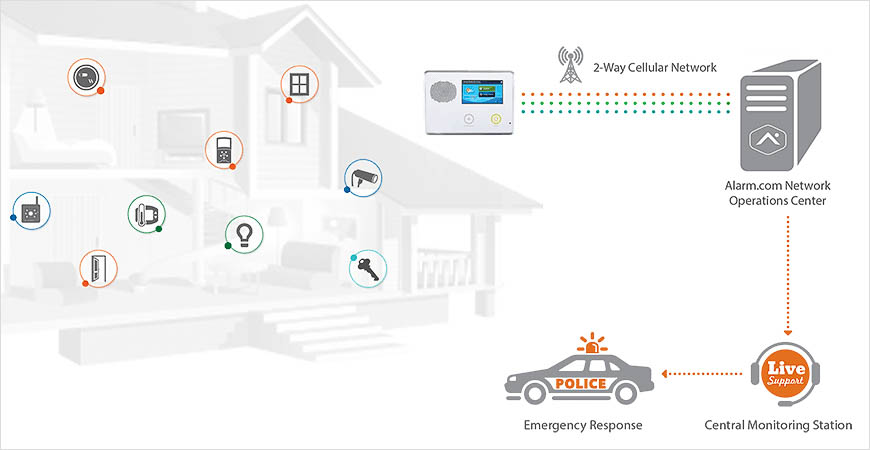
This type of system is called a “Monitored System” in which a professionally licensed central station is monitoring your system for you. The central station service is an additional fee on top of the monthly Alarm.com service. Fees vary among different central stations.
Depending on the state you live in, you may need a security license or an alarm license of some sort to setup a central station service for your client.
Just to reiterate, Alarm.com and Central Station companies are totally different companies, but have the ability to work together.
I will stop you right here and let you know that I do not claim to be a legal expert at all, so please do not take this as legal advice. Consult with your state authorities for the final word on this issue. However, most state laws only require you to be a licensed alarm dealer if you are selling “Monitored Systems” that are monitored by a central station. However, when selling “Self Monitored” systems, the law usually becomes more gray.
A self monitored system takes the central station out of the equation and lays all the burden of monitoring the system on the client. Alarm.com will send you text and/or push notifications when your alarm is triggered with specific info on which particular alarm it was (example: Backdoor Open). This is very handy and depending on the severity of the alarm, the user can decide which appropriate action they need to take on their own, whether it be to call the cops or anything else.
Of course this system is a little more risky for the user. Lets say that Alarm.com sends a notification to your clients phone but they do not have their phone with them, therefore they are not able to take appropriate action. The advantage of using a central station in this case is that the appropriate action will always be taken because there is a real human monitoring the system 24/7. Some customers are okay with this and you would clearly need to let the customer know about this risk.
As said before, the Alarm.com service and 2GIG products are way more than just an alarm service, as you will soon find out. I would say they are more of a home automation and home awareness service now than they are an alarm service. If you intend on selling this without an alarm license, you should be marketing this as a home automation/home awareness type package that just happens to have self monitored alarm capabilities. Marketing these as a straight alarm system without an alarm license will get the authorities attention and honestly is probably unethical.
However, marketing these systems as a home automation systems would be much more allowable as most all states do not require a license for this type of system (Again, I am not a legal expert, so check your local laws). And I'm not just saying this to sound like someone who is trying to get around the law. There are customers who would genuinely be interested in the products and services that this type of system has to offer that has nothing to do with the basic alarm features.
Hopefully you now understand this whole process a little better. Let's go ahead and jump into the next segment, where we will talk about all the cool things that 2GIG and Alarm.com can do.
All the Cool Stuff You Can Do With a 2GIG System and Alarm.com
First off, I will let you know that there are 3 different 2GIG panel (controller) types. However, for the remainder of this blog, I will mainly be referring to the GC3 which is the high end model. If you plan on just getting started with 2GIG, I totally recommend that you start with this model. It is the most expensive model but not by a huge cost difference. In the end, the performance and ease of use is totally worth it.
The cool thing about 2GIG systems is that they are designed as wireless systems. Most of the peripherals such as the door contacts, PIR's, etc, are all battery powered. I was very skeptical of this when I first started dealing with these products, however, the batteries can last up to 3 years and I have had 0 reliability issues with the wireless devices. I have spoken to many installers who used 2GIG well before me who have also stated the same.
Honestly, I don’t see why anyone would ever install a hardwired system for a home or small business after installing a wireless system such as this. It cuts installation time by more than half and the technical know-how needed is very low.
Lets take a look at the 3 different panels:
The Three 2GIG Alarm Panels
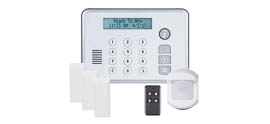
The Rely Kit
A simple and affordable solution. Pre-installed cell card. Turnkey, DIY system. Alarm panel only; no home automation features.
Click Here to View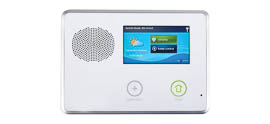
The GC2 Panel
Our most popular 2GIG panel. It adds a ton of features, including home automation and more.
Click Here to View
The GC3 Panel
The GC2 on steroids! Much easier to control with a few additional features. If you're new to home automation, start here!
Click Here to ViewThe Rely Panel
This is sold as a kit and is simply a basic wireless alarm system only. It does not have home automation features that the other two high end models do. This is great for alarm dealers who sell to budget type customers or apartment complexes. Another cool thing is that it is designed in a way in which you can simply give this to your customer and they can install it themselves if you wish.
This is our only panel that does not work with Alarm.com. This works with Securenet. You will need to have this connected to a central station that has integration with Securenet. This device is specifically designed for alarm dealer sales. It's not pertinent to this discussion, but you can read an entire blog post dedicated to this panel here.
The GC2 Panel
This was a groundbreaking alarm panel when it first came out and is still very relevant today. As a matter of fact, this is our top selling panel. This was one of the first panels to come on the market that added real value to an alarm system by adding the wireless home automation protocol “Z-Wave”. This made your alarm system way more than an alarm system. This allowed you to adjust your thermostat, lock your doors, turn on/off lights, turn off power to appliances, etc. Oh yeah, and it happened to be an alarm system.
Everything is super easy to operate and utilizes a touch screen to navigate through the different options. Even cooler is the audible notifications the panel gives you when a device is triggered. For example, if someone walks thru the front door, you will hear “Front Door,” or “Back Door.” Here at the office we have many doors and I always know when someone is coming in a specific door, such as this one: “Back Right Shop Door.”
The GC3 Panel
The GC3 is basically like the GC2 but on steroids. As you can see its mainly taken up by the large 7” screen. Adding devices and managing menu options on this device are even easier than the GC2. You can literally pick this up without any instructions and learn it in a matter of minutes. It also has wifi capabilities which enables a feature called “Dual Path Connectivity.” This allows the panel to connect to Alarm.com through the fastest route available, whether it be the home internet connection or the cellular connection.
This device adds so much value to what would otherwise be a basic, boring alarm system by adding so many sleek features that your customer won't think they just got an alarm system, but a home automation / awareness / convenience system. If you plan on starting out selling these devices, do yourself and your customer a favor and choose the GC3.
Insanely Easy Setup
Setup is so easy, quick, and painless. If you know how to use double sided tape, then you have all the skills needed to install this high end alarm system.
As I mentioned already, the 2GIG system is a wireless alarm system. With a few clicks of some icons on the screen, you are up and running in seconds. The GC3 uses 2 wireless frequencies to communicate with various devices:
1. 345 Mhz:
This wireless frequency is usually used for the alarm-type devices such as door sensors, PIR Motions Sensors, Key Fobs, Smoke Detectors, etc. Most of these devices are all battery operated, which means you simply need to “learn” them into the panel and install them in your desired location. Let me show you how insanely easy it is to add 345mhz device such as a door sensor.
Now your next step is to simply tape it to a door or window of your choosing with the included double sided tape and you are done.
2. Z-Wave
This is a wireless frequency that is very popular among home automation products. Consequently, this is the frequency that the GC3 uses to communicate with the automation-type products, such as light bulbs, door locks, light switches, etc. This is also super easy to setup and takes little to no technical knowledge. Check out this video of me adding a light bulb to the system:
As you can see, configuring a 2GIG system is way easier than configuring a security camera system. What are you waiting for?
Using the System
Not only will you love installing these systems, your customers will also love using them. These things are so incredibly easy to use. Check how easy it is to arm/disarm the system:
Voice Notifications from the panel give the user an audible awareness when a sensor is triggered. There are tons of different voice descriptors that you can choose from. Check out the video below, in which we configured a door sensor to tell the panel to say “Baby’s Gate” when triggered:
Using Alarm.com to Control the System
Of course you can control all your home automation devices and view your notifications right from the panel, but what about when you need to view and control your panel when you are not home? No problem. This is where Alarm.com comes in.
Super Sleek and Easy-to-Use App and Web Interface
You can tell that Alarm.Com is an American Software company simply by viewing their interface. Its sleek, simple, and just makes sense. Take a look at some screenshots below from the app.
Here is what it looks like from the main page. An easy arm / disarm toggle along with the weather forecast. Looks like I need to bring an umbrella:
Of course you can control all of your home automation equipment through Alarm.com as well. Here is a video of me turning on / off the light we installed earlier:
Of course you can also view and control your system thru a web browser on a PC. Check out their beautiful and easy to understand web interface:

Just a quick video of me arming/disarming the panel and messing with the light again.
These are just some basic things you can do with Alarm.com. It's just the tip of the iceberg when it comes to everything that Alarm.com can do.
Some Very Cool Alarm.com Features
With Alarm.com you can...Create Automation Scenes and Schedules
Would you like to turn on your alarm, lock all your doors, make sure your garage door is shut, and turn down your thermostat all with the push of one button? You can do that with Alarm.com’s scene feature.
Create several different scenes for various different scenarios. You can also create schedules to make things turn on or off during certain parts of the day.
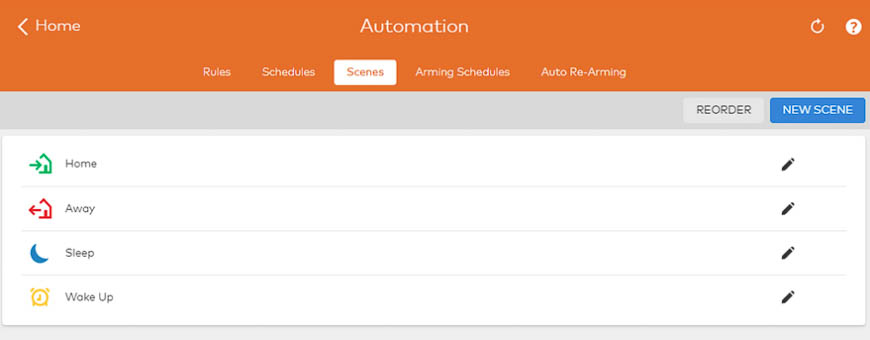
Create If/Then Rules
Lets say that your smoke sensor detects smoke. You can set a rule to turn your AC unit’s fan off. Or if a baby’s gate opens, for instance, you can program the system to sound an alarm. There are countless useful rules to create here.
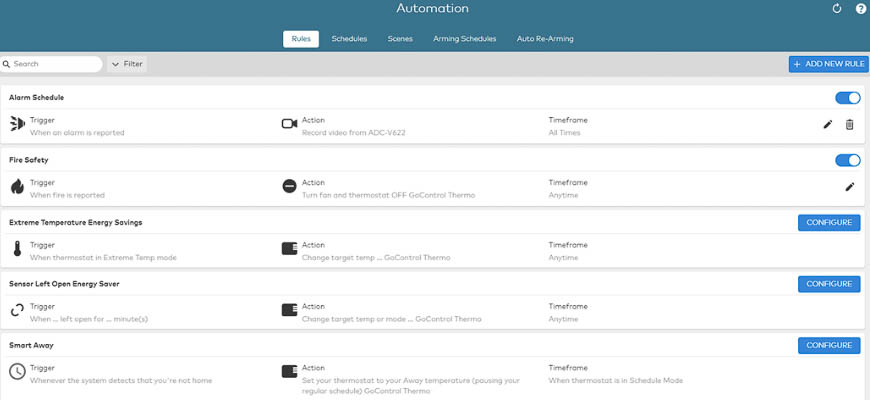
Use Geofencing to Activate a Scene or a Rule
This is really cool. Let's say you are driving home and you are a mile away from your house. Using your phones location settings, Alarm.com will automatically activate a scene or trigger of your choosing without you having to touch a button or lift a finger.
For example, once you are within a predetermined distance from your house, you can set it to open the garage door, unlock the door to the house, and turn down the AC, etc. You can also use this service to let Alarm.com remind you to arm your alarm. It will detect if you have left your house and forgot to arm the alarm. It will then either ask if you want to arm the alarm or do it automatically.
More, More, and More
Alarm.com keeps adding cool features to their platform. For example, you can also operate your sprinkler system. You can use it as a wellness system (think: “Ive Fallen, and I can't get up”).
They have also started to dive into the business field by offering access control options and video analytics. We haven’t even touched on everything that Alarm.com has to offer, and they keep building better features all the time!
Jump on the Alarm.com Bandwagon!
As you can see, if you have not been using 2GIG products paired with the Alarm.com service, you and your customers have been missing out. If you are an alarm dealer but you are using a system that is subpar to 2GIG / Alarm.com, don’t be left behind. Contact us and we will help you get setup so you can give your customers more value!
If you are not an alarm dealer but you are interested in giving your customers some very nice home and business automation features, this is for you as well!
The best way to start out with these is to buy a small system for yourself so you can learn and grow to love it. Whenever you sign up as an Alarm.com dealer, you are given two free demo accounts that cost you nothing each month but allow you to use the service to its full extent.
At the bottom of this post, I've placed a list of products that I think would make a great starter kit for you to dive into this exciting field of products. Check it out and, as always, let us know if you have any questions.
